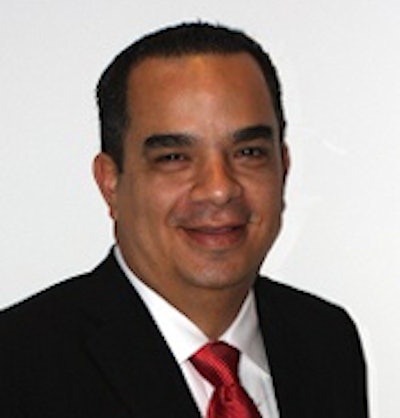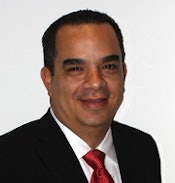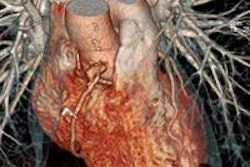
The past six months have brought many substantial changes for radiopharmaceutical developer Navidea Biopharmaceuticals. The company's accomplishments range from new grant funding to expanded regulatory indications for its main product.
Since September 2014, the company has received grant funding to explore new indications for Lymphoseek, a technetium-99m-based radiopharmaceutical designed to locate lymph nodes, and last October, the U.S Food and Drug Administration (FDA) expanded the indications for its use.
Earlier this month, Navidea reported growing revenues in 2014, and the company signed a distribution deal with a Dutch pharmaceutical company to bring Lymphoseek to Europe.
 Rick Gonzalez, CEO of Navidea Biopharmaceuticals.
Rick Gonzalez, CEO of Navidea Biopharmaceuticals."The October label expansion triggered a more traditional commercialization strategy that will allow us to promote [Lymphoseek] actively to surgery, oncology, and nuclear medicine for biopsy, breast melanoma, and head and neck cancers," said CEO Rick Gonzalez. "It will also allow us to go out and support the emerging trend in utilization and adoption for biopsy and mapping in other tumor types. That was something that could not be done on the previous label."
Gonzalez himself was among the additions to Navidea, coming on board as CEO last October. The 20-year pharmaceutical industry veteran came to the company from Spectrum Pharmaceuticals, where he served as vice president of global operations.
His appointment came shortly after the FDA in September granted orphan drug status to Lymphoseek for use in sentinel lymph node detection in patients with head and neck cancer.
The designation gave Navidea a seven-year marketing exclusivity period against competition in head and neck cancers, as well as incentives that include federal grants, tax credits, and a waiver of Prescription Drug User Fee Act (PDUFA) filing fees. The provisions allow Navidea to request a refund of previously paid filing fees of up to $1.1 million.
SBIR grant money
That same month, Navidea received a grant from the U.S. National Cancer Institute (NCI) to fund a clinical study of Lymphoseek in women with cervical cancer. The Small Business Innovation Research (SBIR) grant is worth up to $1.67 million.
The study will compare Lymphoseek with an alternative lymphatic mapping agent, vital blue dye, for the detection of sentinel lymph nodes in cervical cancer patients. The researchers will also evaluate sentinel node pathology between agents as well as nonsentinel nodes.
The labeling expansion through Navidea's supplemental new drug application (sNDA) allows Lymphoseek to be used as a lymphatic mapping agent for solid tumors as part of an intraoperative procedure.
Lymphoseek is also indicated for guiding sentinel lymph node biopsy using a handheld gamma counter in patients with clinically node-negative squamous cell carcinoma of the oral cavity, breast cancer, or melanoma.
Phase III trials
Navidea has also been touting positive results from two phase III clinical trials using Lymphoseek.
Most recently, researchers at Ohio State University Wexner Medical Center compared Lymphoseek-guided sentinel node biopsy with nodal pathology, the standard of care for planned elective neck dissection procedures.
The study showed that Lymphoseek could accurately identify sentinel lymph nodes in subjects with node-negative squamous cell carcinoma of the oral cavity, compared with the removal of all lymph nodes during multiple-level nodal dissection surgery of the head and neck (Annals of Surgical Oncology, February 11, 2015).
Also, in a paper published in January, Lymphoseek-guided sentinel lymph node biopsy with vital blue dye was assessed against technetium-99m sulfur colloid plus the dye in breast cancer patients.
Researchers from the University of California, San Diego found that Lymphoseek patients had significantly fewer sentinel lymph nodes removed per procedure and fewer nodes were needed to detect cancer spread. In addition, nodes removed using Lymphoseek had greater predictive value for diagnosing the spread of breast cancer to lymph nodes (Ann Surg Oncol, January 2015, Vol. 22:1, pp. 40-45).
Revenue growth
Navidea earlier this month posted impressive revenue growth for its 2014 fiscal year. Revenues increased to $6.3 million, compared with $1.1 million in 2013.
The bulk of last year's revenues ($4.2 million) came from sales of Lymphoseek, with a portion of the remainder ($1.7 million) coming from various federal grants and other revenue. The company also reduced its net loss to $27.6 million in 2004, compared with a net loss of $38.4 million in 2013.
Navidea also began to expand its global reach this month with a commercialization and distribution deal with Dutch pharmaceutical company Norgine for the Lymphoseek 250 microgram kit.
Navidea will supply Norgine with Lymphoseek and transfer responsibility for regulatory maintenance of the agent's marketing authorization to Norgine. Norgine also will handle pricing, reimbursement, sales and marketing, and medical affairs for the European Union.
In return, Navidea will receive an upfront payment of $2 million and is eligible to receive additional milestone payments up to $5 million, as well as royalties on European net sales.
Closer to home, Gonzalez said the top priority for Navidea is to deploy a commercial infrastructure to get word out about Lymphoseek's efficacy to the oncology community, which includes surgical oncology and nuclear medicine.
The company plans to have its commercial sales force in place before the end of this year, while maintaining an existing goal to provide medical-science liaison support for Lymphoseek.
"There is now a refocusing of the resources that were allotted to the medical-science liaison, primarily triggered by the label expansion in October 2014," Gonzalez said. "Those resources will now be repurposed for commercial execution of a more traditional sales force. The role of the medical-science liaison will evolve, but we are very confident that we will have success moving forward."
Macrophage Therapeutics unit
Navidea also is looking to grow its Macrophage Therapeutics business unit. In January, the company signed a nonbinding term sheet for an initial round of standalone financing for the unit. Dr. Michael Goldberg, director and CEO of Macrophage Therapeutics, proposed the initial investment, which was based on a $500 million valuation.
The transaction is designed to raise $2.5 million for a 0.5% ownership of Macrophage Therapeutics by the investors. Upon completion of the funding, it will be incorporated as a subsidiary of Navidea, and shareholders of Navidea will retain 99.5% ownership.
The investment will be used for product development, general working capital, and to recruit a scientific advisory board.



















